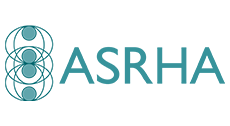Gonorrhoea
Overview
- Gonorrhoea is most commonly diagnosed in men who have sex with men, young (heterosexual) Aboriginal and Torres Strait Islander people living in remote and very remote areas, and travellers returning from high prevalence areas overseas.
- Increasing prevalence in general population, especially in women of reproductive age.
- Previous infection does not provide immunity to new infection.
- Reduced susceptibility to first-line treatment is emerging in urban Australia and is being monitored closely.
- Neisseria gonorrhoeae, a Gram-negative intracellular diplococcus bacterium.
Anal and pharyngeal gonorrhoea infections are asymptomatic in most people, vaginal gonorrhoea is often asymptomatic (in 80% of cases), and penile urethral gonorrhoea is almost always symptomatic (in 85-90% of cases).
|
Symptoms |
|
|
|
|
Complications |
|
|
See STI Atlas for images.
ALWAYS collect samples for gonococcal culture before treating gonorrhoea, to determine antimicrobial sensitivity and contribute to antimicrobial resistance surveillance. However, do not delay treatment to wait for these culture results.
|
Site/Specimen |
Test |
Consideration |
|
NAAT |
In people who do not have a vagina or if endocervical swab/self-collected vaginal swab cannot be taken Less sensitive than self-collected vaginal swab For men who have sex with men, also collect anal and pharyngeal swab for NAAT even if asymptomatic at these sites |
|
|
Penile urethral swab |
Culture |
Only required if discharge or other local symptoms present, or before administering antibiotics If men who have sex with men, also collect anal and pharyngeal swab for NAAT even if asymptomatic at these sites |
|
Clinician-collected endocervical swab |
NAAT +/- culture |
Best test if examined In asymptomatic patients, an endocervical swab for NAAT is sufficient. However, if the patient has vaginal symptoms, collect additional swab for gonococcal culture |
|
Self-collected vaginal swab |
NAAT +/- culture |
Best test if not examined In asymptomatic patients, a vaginal swab for NAAT is sufficient. However, if the patient has vaginal symptoms, collect additional swab for gonococcal culture |
|
Anorectal swab
|
NAAT +/- culture |
Collect for all men who have sex with men, and any patient with anorectal symptoms In asymptomatic patients, a self-collected or practitioner-collected rectal swab for NAAT is sufficient. However, if the patient has anorectal symptoms, collect additional swab for gonococcal culture |
|
Pharyngeal swab |
NAAT +/- culture |
Collect for all men who have sex with men, and for anyone else with multiple sexual partners. |
NAAT – Nucleic acid amplification test.
Gonococcal culture should always be collected before antibiotics are administered, but treatment should be administered without waiting for culture results.
Specimen collection guidance
Clinician collected | Self-collection
Investigations
- NAATs are highly sensitive, allow for patient self-sampling and can be used in non-clinical and non-urban settings. They are not validated for non-genital sites however, and rarely false positives can occur. NAATs are the most common gonorrhoea test used in Australia.
- Gonococcal culture has high specificity and allows for antibiotic susceptibility testing but is much less sensitive than NAAT. Culture samples should be obtained from all infected sites at the time of treatment to determine antibiotic susceptibility. Culture accuracy depends on stringent incubation and transport conditions and should reach the laboratory within 24 hours. Clinicians must specifically request ’gonococcal culture’ rather than general ’culture’, as gonococci require specific culture conditions.
Gonococcal culture samples should always be collected from all infected sites before antibiotics are administered, but treatment should be administered without waiting for culture results.
|
Principal treatment options |
||
|
Situation |
Recommended |
Alternative |
|
Uncomplicated genital and anorectal infection |
Ceftriaxone 500 mg IMI, stat. in 2 mL 1% lignocaine PLUS Azithromycin 1 g PO, stat. |
Alternative treatments are not recommended because of high levels of resistance, EXCEPT for some remote Australian locations and severe allergic reactions. |
|
Uncomplicated pharyngeal infection* |
Ceftriaxone 500 mg IMI, stat. in 2 mL 1% lignocaine PLUS Azithromycin 2 g PO, stat. |
Alternative treatments are not recommended because of high levels of resistance, EXCEPT for some remote Australian locations and severe allergic reactions. Azithromycin given as 1 g followed by 1 g 6 hours later may reduce gastrointestinal side-effects. |
|
Adult gonococcal conjunctivitis |
Ceftriaxone 1 g IMI, stat. in 2 mL 1% lignocaine PLUS Azithromycin 1 g PO, stat. |
Alternative treatments are not recommended because of high levels of resistance, EXCEPT for some remote Australian locations and severe allergic reactions. |
BD: twice a day
IMI: intramuscular injection
PO: orally
stat.: immediately
*If a patient has received the recommended treatment for genital or anorectal gonorrhoea at the time of testing, and if they’re found to also have pharyngeal gonorrhoea, they do not need to be re-treated with the higher dose of azithromycin, but a test of cure is recommended.
Treatment advice
- Reduced susceptibility to the first-line treatment of intramuscular injection ceftriaxone and azithromycin is emerging in urban Australia.
- Sharing of antimicrobial resistance genetic material between bacteria and reduced drug penetration to pharyngeal mucosa makes it the most likely site of treatment failure.
- Dual antibiotic treatment is recommended to create a pharmacological barrier to the development of more widespread resistance to treatment.
- Ceftriaxone monotherapy should not be used outside specialist centres monitoring culture-based antibiotic susceptibility.
- Ciprofloxacin 500 mg orally immediately can be used to treat gonorrhoea, but only if susceptibility has been confirmed on NAAT or culture, and this should not delay treatment.
- If a patient has an intrauterine device (IUD), leave it in place and treat as recommended. Seek specialist advice as needed.
Other immediate management
- Advise no sexual contact for 7 days after treatment is commenced, or until the course is completed and symptoms resolved, whichever is later.
- Advise no sex with partners from the last 2 months until the partners have been tested and treated if necessary.
- Recommend partner notification.
- Provide patient with factsheet.
- Notify the state or territory health department.
- Consider testing for other sexually transmitted infections (STIs), if not undertaken at first presentation.
- Consider human immunodeficiency virus (HIV) pre-exposure prophylaxis (PrEP) for anyone diagnosed with gonorrhoea.
Special considerations
- Consider seeking specialist advice before treating any complicated presentation.
|
Situation |
Recommended |
|
Rectal co-infection |
For rectal co-infection with chlamydia, treatment should be given for gonorrhoea AND chlamydia i.e. PLUS Doxycycline 100 mg PO, BD 7 days if asymptomatic, but 21 days if symptomatic (see anorectal syndromes) |
|
Same as principal treatment option. |
|
|
Allergy to principal treatment choice |
Seek specialist advice. |
|
Regional/remote areas where gonorrhoea is known to be penicillin susceptible. To confirm check with local public health unit |
Amoxicillin 3 g PO, stat. PLUS Probenecid 1 g PO, stat. PLUS Azithromycin 1 g PO, stat. (when chlamydia not excluded). If the infection is likely to have been acquired beyond local or other remote locations, use principal treatment option. |
- Contact tracing for gonorrhoea is a high priority and should be performed in all patients with confirmed infection.
- Contact tracing is important to prevent re-infection and reduce transmission.
- All partners should be traced back for a minimum of 2 months.
- The diagnosing doctor is responsible for initiating and documenting a discussion about contact tracing.
- Offer testing of exposed anatomical sites to all sexual contacts.
-
Consider presumptive treatment if there has been sexual contact within the past 2 weeks or when the person’s individual circumstances mean later treatment may not occur.
See Australasian Contract Tracing Manual – Gonorrhoea for more information.
Review in 1 week provides an opportunity to:
- Confirm patient adherence with treatment and assess for symptom resolution
- Confirm contact tracing has been undertaken or offer more contact tracing support
- Educate about condom use, contraception, HIV PrEP/PEP, safe injecting practices, consent, CST and vaccinations for HAV, HBV and HPV as indicated.
Test of cure
For each site of infection (pharyngeal, anal or cervical), TOC by NAAT should be performed 2 weeks after treatment is completed, especially if no gonococcal culture swab was collected before treatment, or if the culture swab indicated antimicrobial resistance, or if the patient was treated with a non-standard regimen.
Test for re-infection:
- Re-infection is common.
- Retesting at 3 months is recommended to detect re-infection.
- Consider testing for other sexually transmitted infections (STIs) including Syphilis and HIV if not undertaken at first presentation or retesting after the window period.
If test of cure or retesting is positive, seek specialist advice.
- 100% of patients diagnosed with gonorrhoea are treated with an appropriate antibiotic regimen.
- 100% of patients are advised to avoid sexual contact for 7 days after treatment is administered.
- 100% of patients diagnosed with gonorrhoea are recalled for repeat testing after 3 months.


